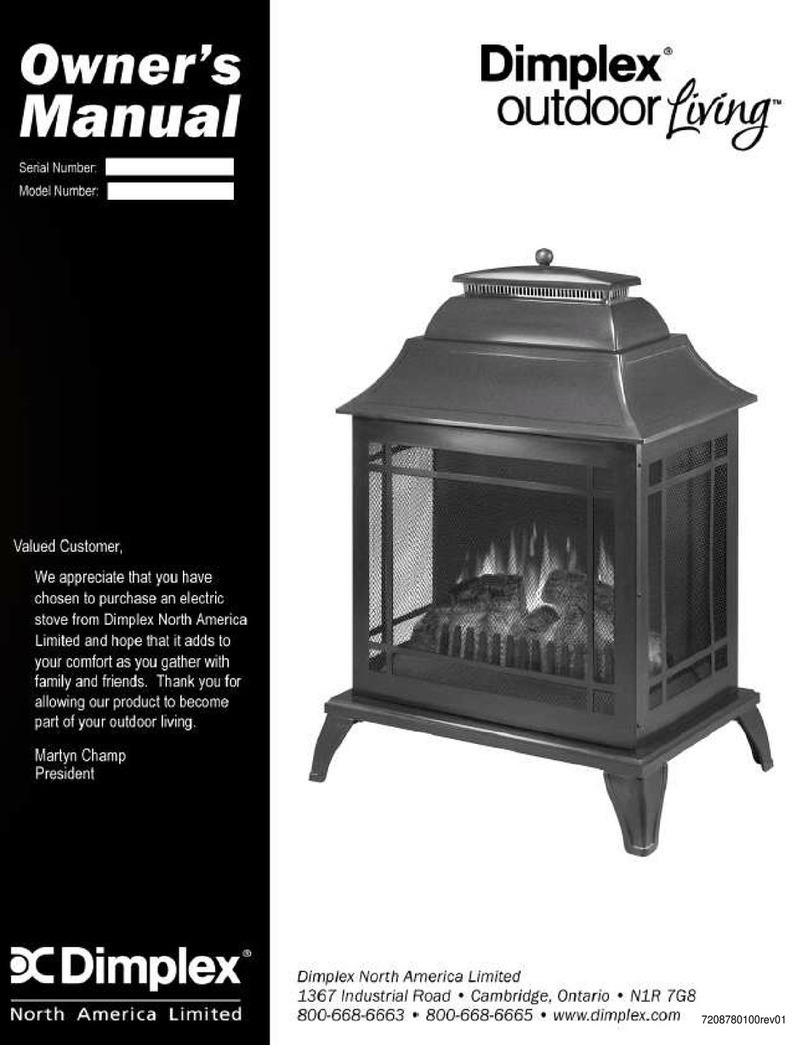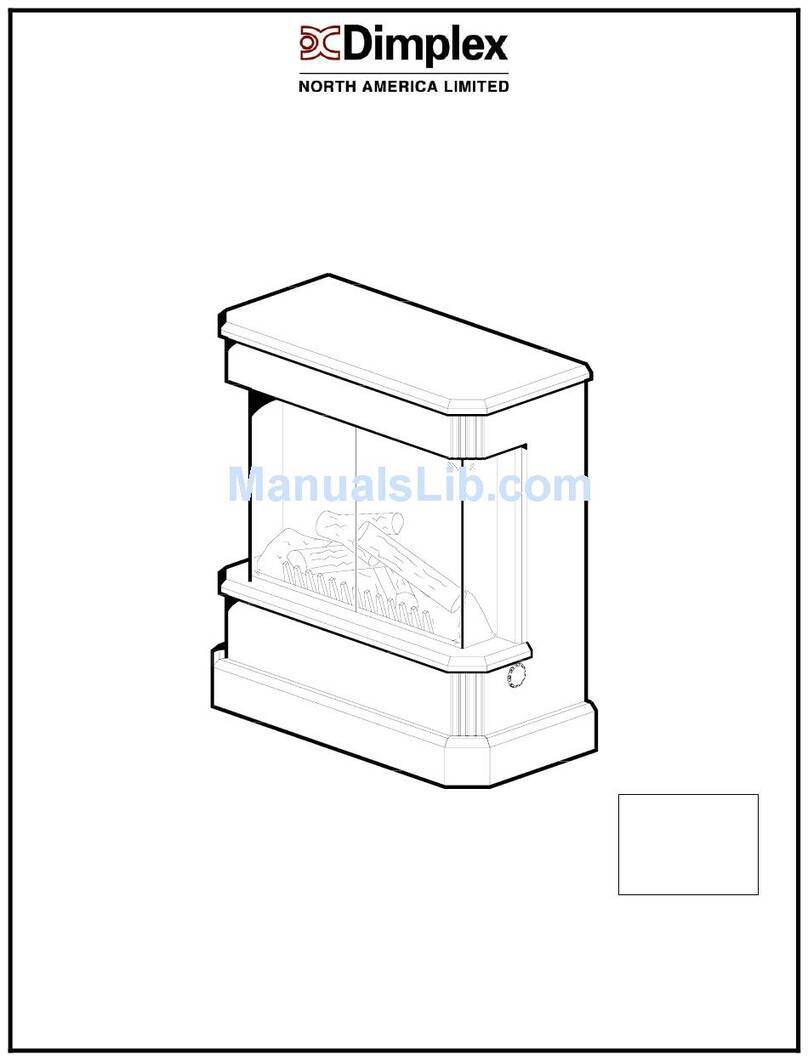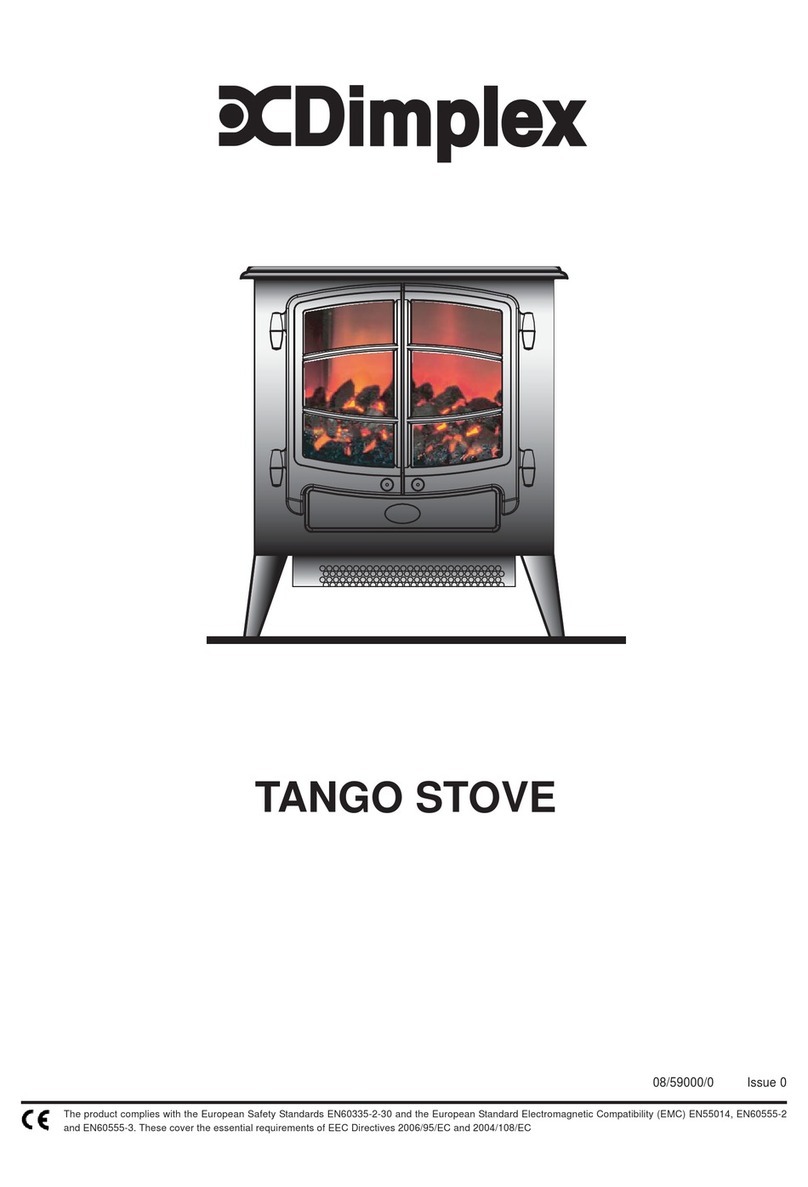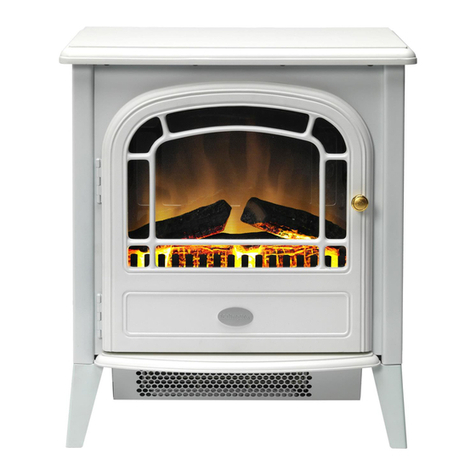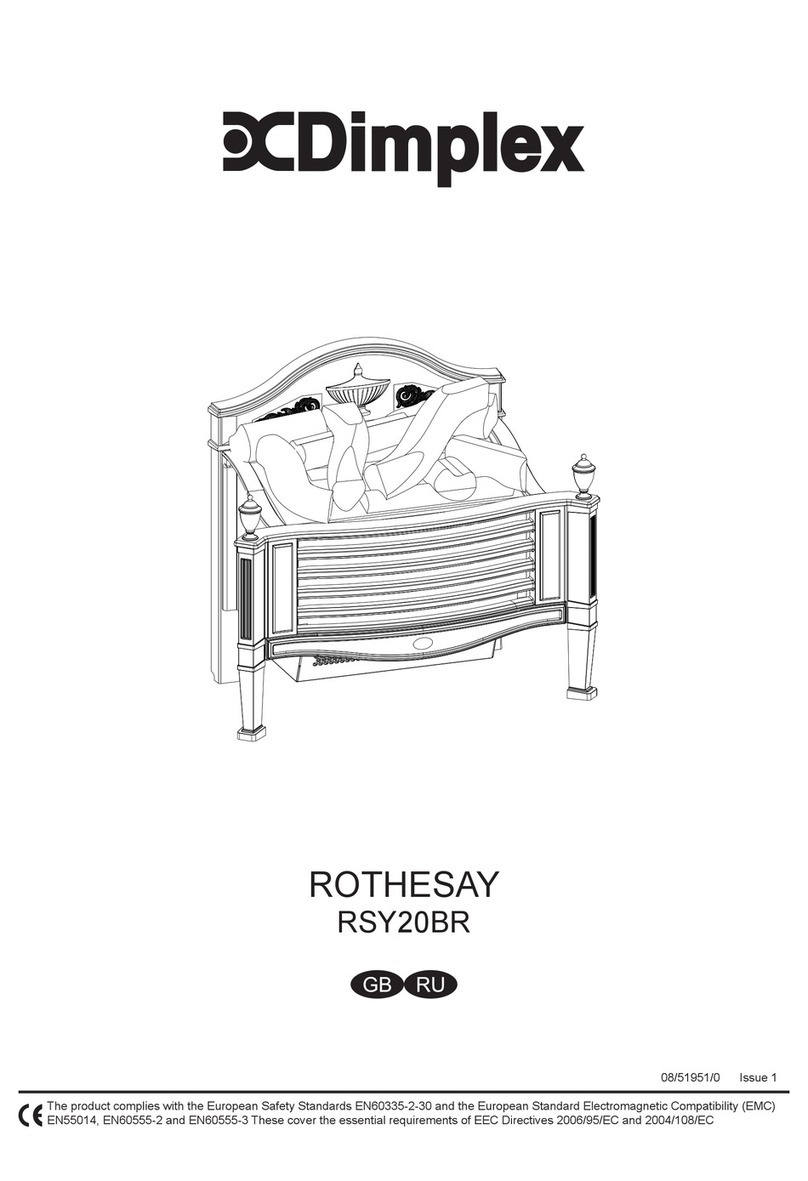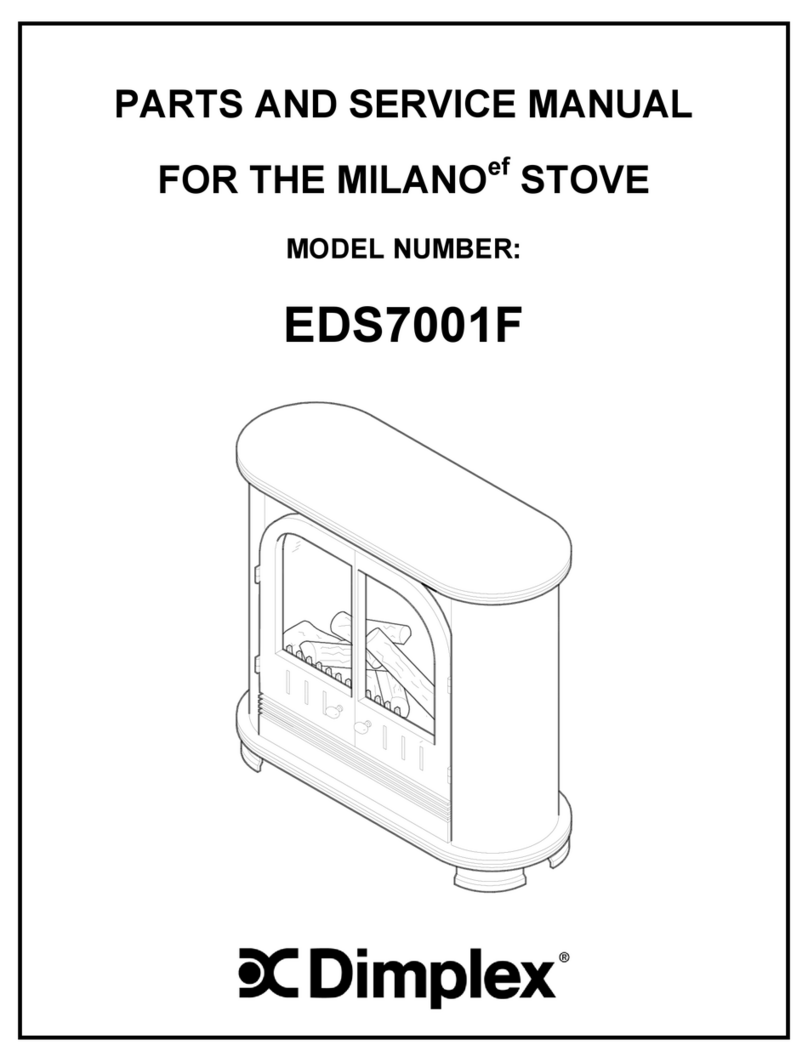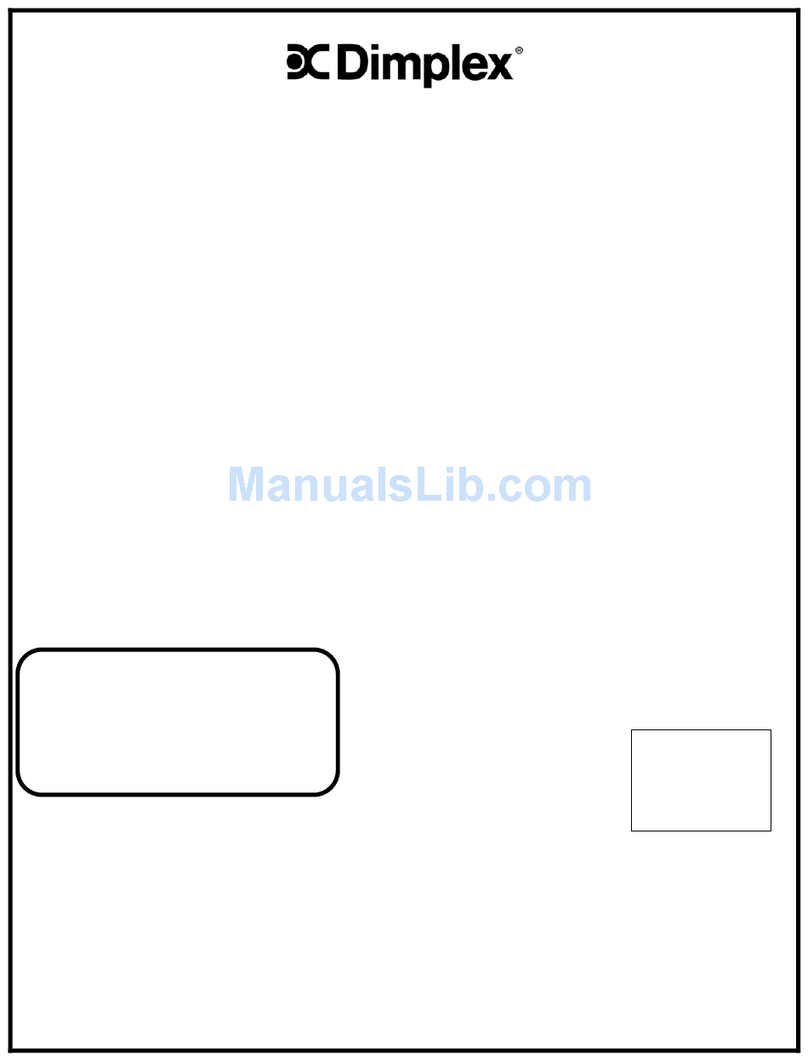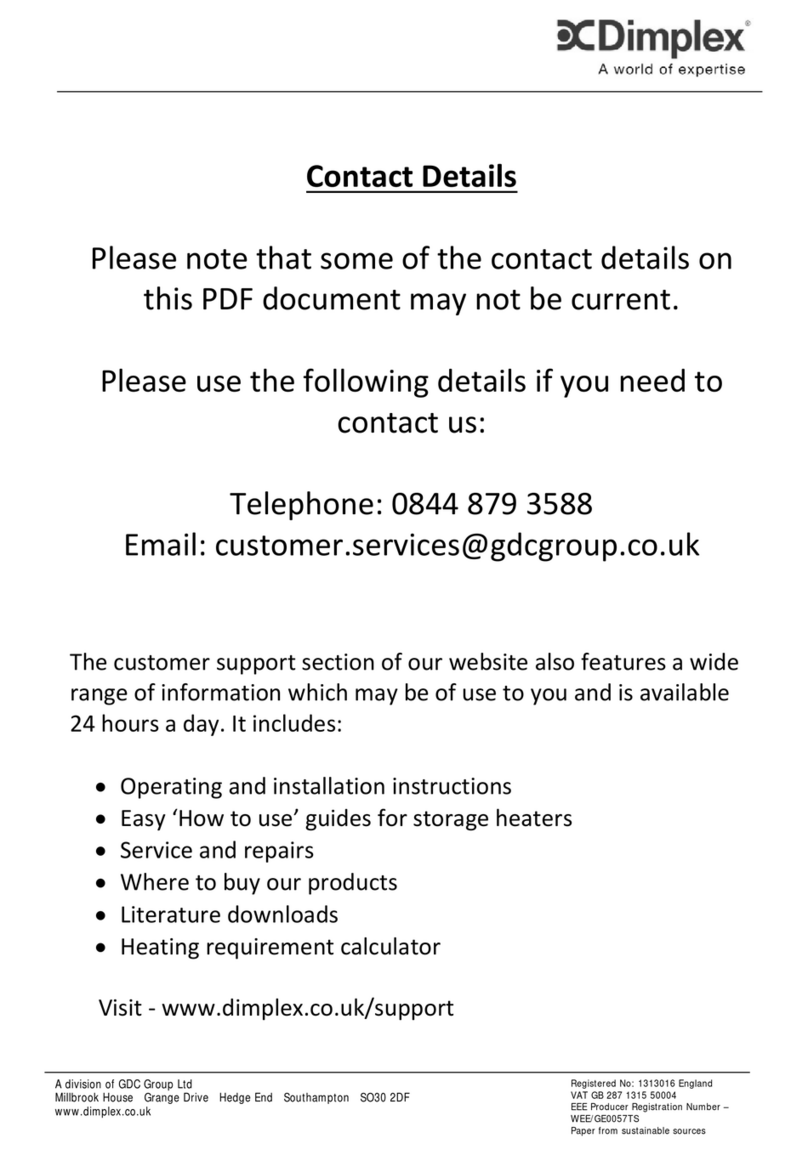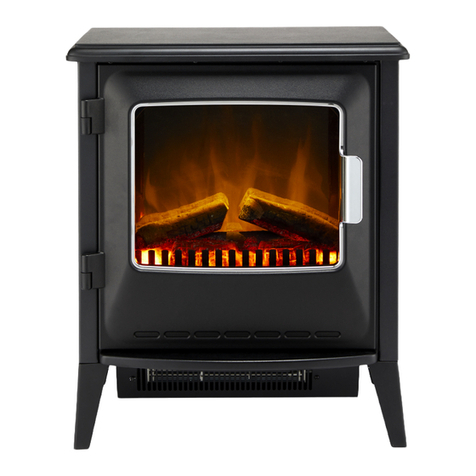- 7 -
Commissioning
Upon completion of installation, the stove and ue system should
be tested by a suitably qualied person to make sure it is safe for
normal use. A smoke draw test should be completed to check for
soundness of joints and seals and also that all smoke and fumes
are taken from the appliance up the chimney and emitted safely.
First warm the ue with a blowlamp or similar for about 10 minutes.
Place a lit smoke pellet on the centre of the grate with the air
controls open. Close the door – the smoke should be drawn up the
ue and be seen to exit from the ue terminal. Complete the test
with all windows and doors shut in the room where the appliance
is tted.
If a ceiling fan is present it must be operated on max for the duration
of the test. If there are any extraction fans in adjacent rooms these
too must be operated on maximum setting during the test with the
interconnecting doors open. If any spillage occurs, recheck the
suitability of the ue system making sure there is adequate air
supply to the room (as per Building Regulations).
Light the appliance and slowly increase the temperature to
operating levels. Open the main re door when the appliance
reaches normal operating condition and carry out a spillage test
using a smoke match or pellet around the door opening. If any
spillage occurs, open all windows, allow the re to go out and
recheck the ue system and ventilation.
Operating Instructions
Please read fully these operating instructions and advise any
other users of the correct operating procedures for this stove.
Warning: This appliance and its operating handles become
hot when the stove is in use and the stove will remain hot for
some time afterwards. For your safety use the glove provided.
Initial Firing of Stove
We recommend that you have 3-4 small res before you operate
your stove to maximum heat output. This is to allow the paint to cure
and the castings to relax and consolidate location. We recommend
this ‘running in’ procedure after long idle periods to preserve the
life of the stove. During this you may notice an unpleasant smell
as paint and re cement cures. It is not toxic but for your own sake
we would suggest that during this period you leave all doors and
windows open.
Air Controls
Primary air is controlled via the sliding vent (Fig 9 A) in the bottom
of the door; this provides a conventional air draught to the bed of
the re. Moving the slider to the right increases the air intake, to
the left reduces the air intake.
Secondary air is controlled via the sliding vent (Fig 9 B) above the
door. It is this ‘Airwash’ that keeps a clean and uninterrupted view
of the re, also aiding in good secondary combustion of fuel and
reducing emissions into the chimney and environment.
Lighting the Stove
Place re lighters or paper and 5-6 pieces of dry kindling on the
grate. Light the re at base and allow the kindling to light fully
across the grate. Build the re up gradually using small rells of
fuel until there is a good re bed and the re is well established.
When refuelling with wood, leave both air controls in the fully open
position to the right for 1-2 minutes until the new fuel is burning
brightly. Once the fuel is fully alight and ames are well established,
the primary air (undergrate air) should be closed fully and the
airwash reduced to adjust the stove to the desired heat output.
If refuelling with solid fuel then the airwash should be closed
and the primary air slide should be fully open until the fuel is well
alight. Once the fuel is well alight the primary air may be adjusted
to control the re to the desired heat setting.
Do not operate the stove with both air supplies open for
extended periods, as this will result in overring, causing
excessive running temperatures and premature burnout of
components.
Running the Stove
When your fuel is well alight you can start to restrict the air intake to
the desired setting. Your stove is burning with maximum efciency
when a bright re is achieved using minimum air inlet.
Never leave the stove unattended until the fuel is burning well and
the air supply has been adjusted down to desired level.
Note that refuelling onto a low rebed causes excessive smoke
to occur. Refuelling must be carried out onto a sufcient quantity
of glowing embers to ignite fuel in a reasonable period. If there
are too few embers add kindling rst to get re going again before
refuelling. The stove is not suitable for overnight burning.
For optimum performance the stove should not be overlled with
fuel above the height of the rear brick. To do so can cause poor
operation, excessive smoke to occur and possible damage to bafe
plate. The stove must not be operated with the door left open.
This stove is capable of intermittent operation.
Notes on Wood Burning
Burn only dry, well seasoned wood (< 20% moisture), which should
have been cut, split and stacked for a minimum of 12 months (24
months is better) with free air movement around all sides of the
stack to enable it to dry out. Burning wet or unseasoned wood will
create tar deposits in the stove and chimney and will not produce
a satisfactory heat output. When loading wood, make sure that the
end grain of the wood in the stove is pointing away from the glass
otherwise the moisture and gases coming from the end grain of
the wood will dirty the glass.
Table 6 - Maximum log lengths
Bellingham Inset 4.7kW 230mm (9”)
Notes on Solid Fuel burning (Other than Wood)
Always de-ash the stove before burning solid fuel and do not let the
ash build up to the underside of the grate bars. Solid fuel produces
ash, which if allowed to build up it will stie the air ow through the
grate and will eventually cause the re to die. Air passing through
the rebed cools the grate. Distortion or burning out of the grate
bars is nearly always caused by ash being allowed to build up
on the underside of the grate. With some solid fuels a residue of
burnt fuel or clinker will accumulate on the grate. It is important to
empty the ash pan and remove clinker after each ring of the stove.
We recommend the use of HETAS approved manufactured
smokeless fuels. Note that different types of fuel will give different
performances. Using the stove as an incinerator for household
waste invalidates the warranty is not recommended as fumes from
plastic, etc will cause pollution to the atmosphere and will cause
damage to the stove.
Petroleum coke fuels, bituminous (smokey) coal or household
waste should not be burned in this appliance.
Shutting Down
To shut down the stove, close the primary air controls and then
the secondary air controls by moving both sliders to the left. If the
controls are left in this position the re will be starved of air and will
go out. To revive the re if it has not already extinguished, open
the primary air controls rst, then the secondary air.

